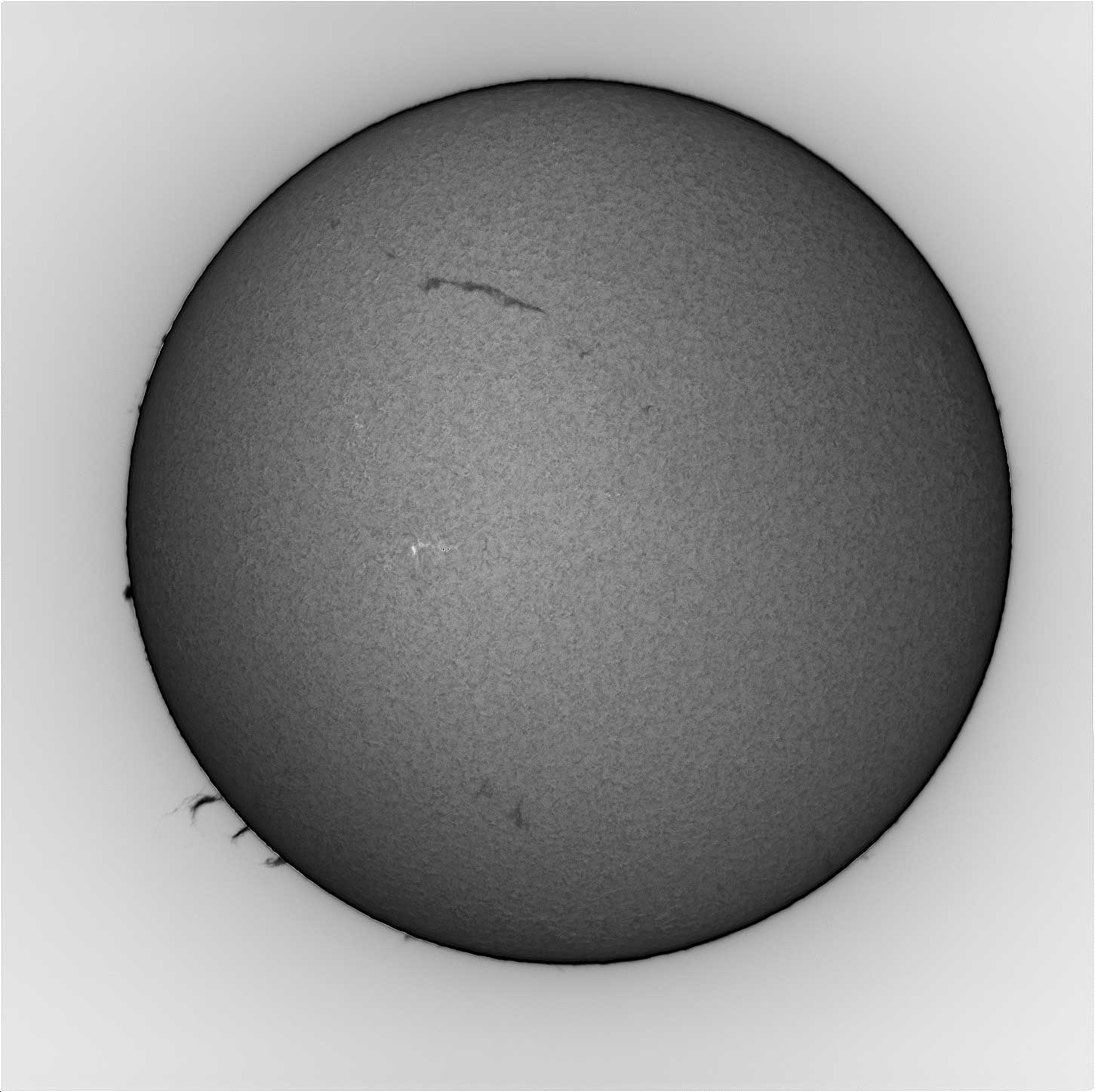
2018-Jan 6 - B. Colville - 1 - Full-Ha Any colder and the mounts and camera would likely have failed. Solar activity has diminished over the past year as we approach the next solar minimum, but there were a few small active regions, a nice large filament and a few proms. The full disk image is a composite of two separate images…one of the disk and one of the limb (longer exposure to pull up the prominences and this image is inverted to enhance them against the bright background). Not a ‘real’ view, but it has become a standard method I use to show the smaller proms more. The other two images use a 3x barlow to increase to focal length and improve the resolution. Image by Brian Colville January 6, 2018
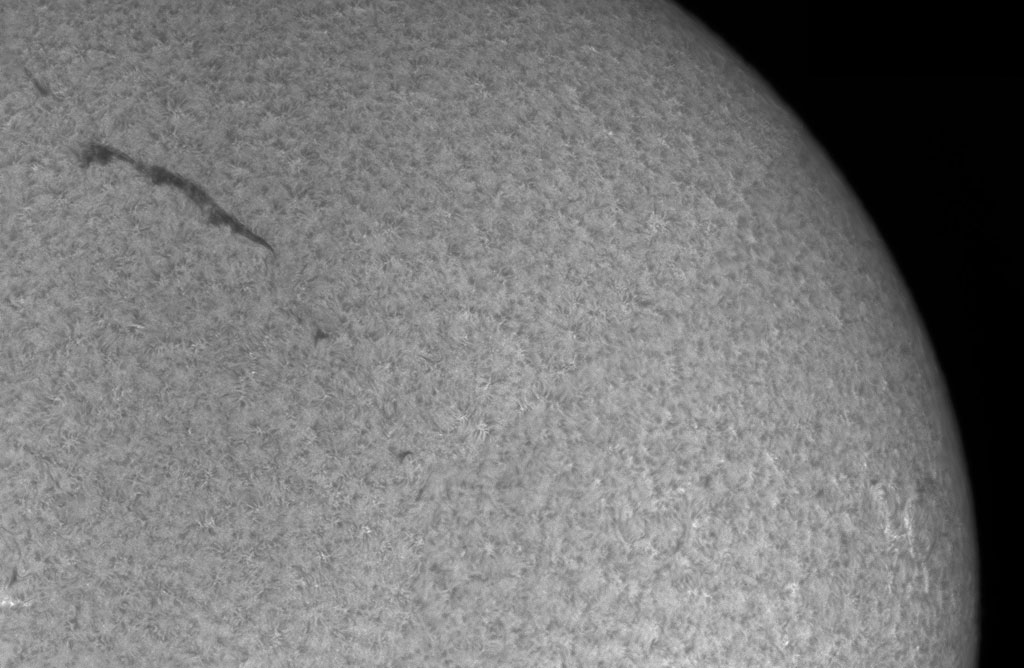
2018-Jan 6 - B. Colville - 2 - NW Any colder and the mounts and camera would likely have failed. Solar activity has diminished over the past year as we approach the next solar minimum, but there were a few small active regions, a nice large filament and a few proms. The full disk image is a composite of two separate images…one of the disk and one of the limb (longer exposure to pull up the prominences and this image is inverted to enhance them against the bright background). Not a ‘real’ view, but it has become a standard method I use to show the smaller proms more. The other two images use a 3x barlow to increase to focal length and improve the resolution. Image by Brian Colville January 6, 2018
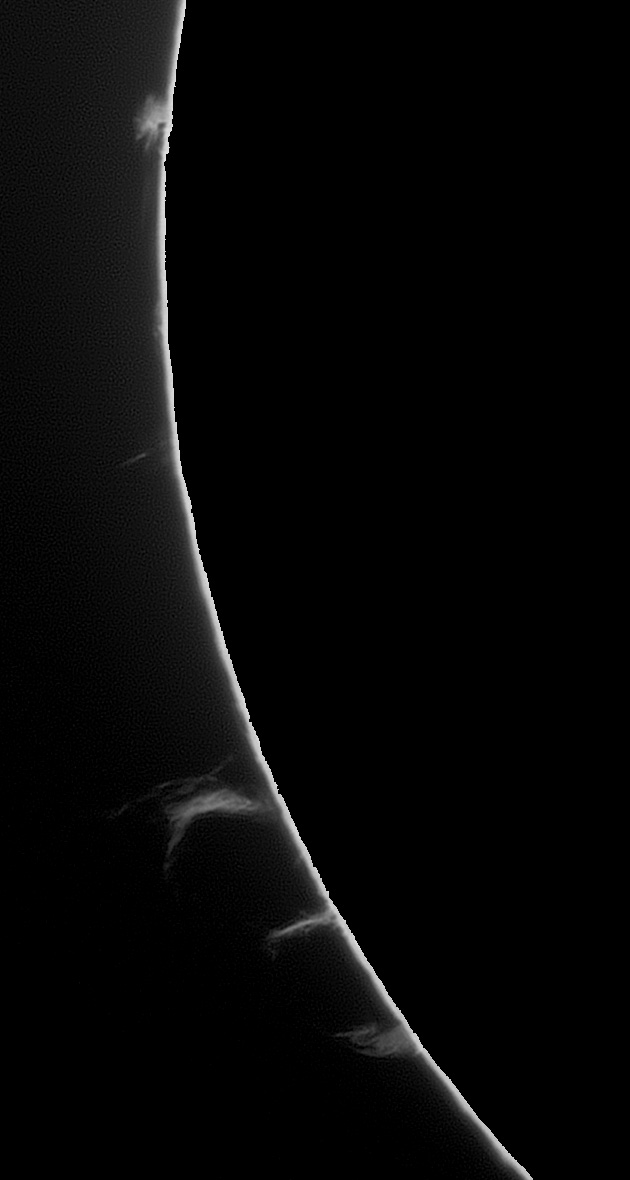
2018-Jan 6 - B. Colville - 3 - E-Proms Any colder and the mounts and camera would likely have failed. Solar activity has diminished over the past year as we approach the next solar minimum, but there were a few small active regions, a nice large filament and a few proms. The full disk image is a composite of two separate images…one of the disk and one of the limb (longer exposure to pull up the prominences and this image is inverted to enhance them against the bright background). Not a ‘real’ view, but it has become a standard method I use to show the smaller proms more. The other two images use a 3x barlow to increase to focal length and improve the resolution. Image by Brian Colville January 6, 2018
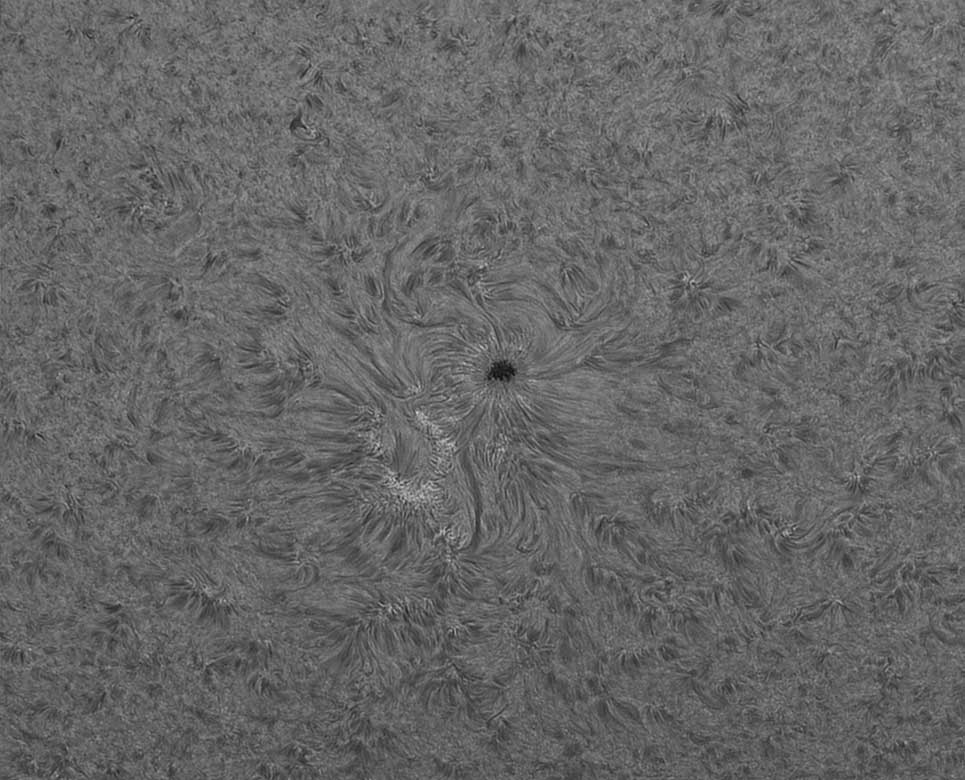
The appearance of Comet NEOWISE has given a lot of opportunity to do some nighttime viewing, but there has been an increase in solar activity over the past few days as well. A new active region rotated into view late last week and it has lots of detail to view in white light and Ha. Worth a look if you have the proper filters! Taken by: Brian Colville
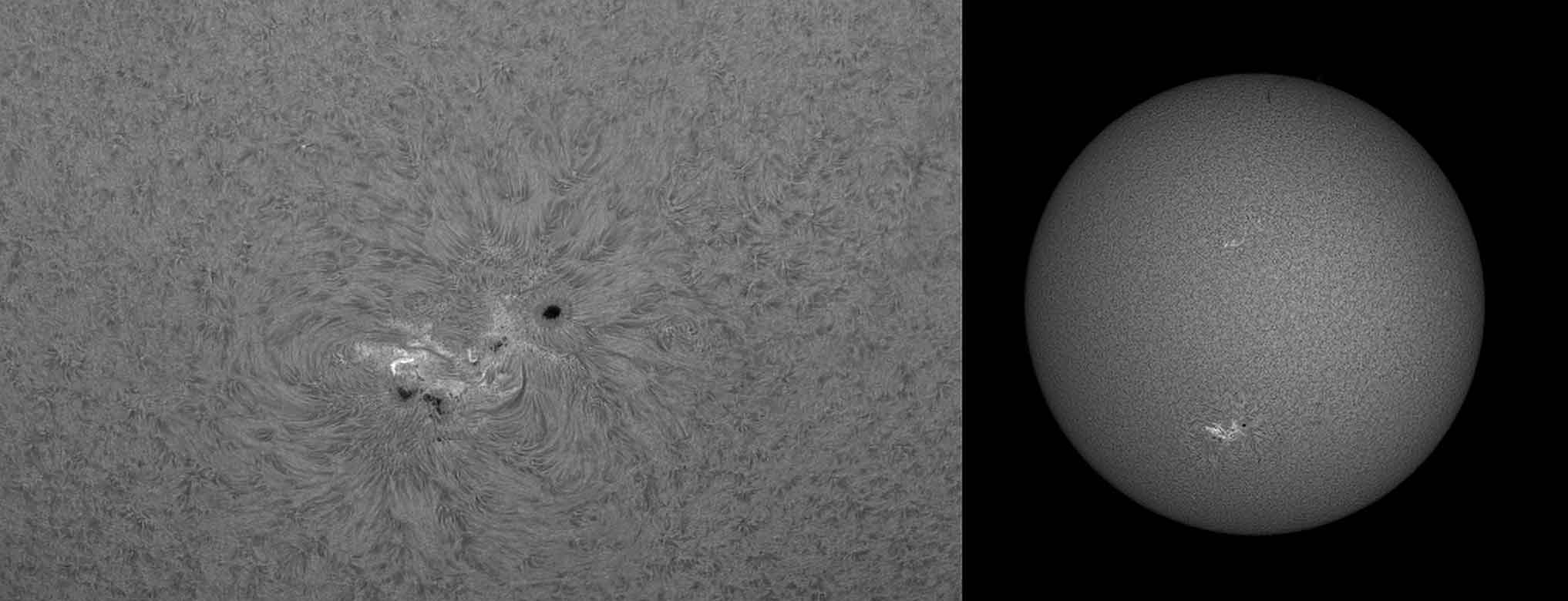
2020-November 7 - Brian Colville - Sun Today Those who were logged into the meeting last night heard my discussion of the recent upswing in solar activity. The morning started clear here, so I went out to image the active region with the 6 inch Ha scope. I have attached the full disk Ha image to give some perspective on how large this active region is. There is a second AR on the full disk image, but it is nowhere near as impressive as the big one in the southern hemisphere.

2020-November 8 - Rick Stankiewicz - The Biggest Active Region Since the Solar Cycle Began Now is a great time to get out to see the largest active region on the Sun since things started cooking up there. If Brian’s recent images didn’t get your juices flowing, I’m giving it a try today. If you have a solar filter, put it on and give it a try. Sunny all day today and maybe tomorrow too. The AR 2781 it easy to spot and well placed in the centre of the solar disk, but it moves each day, so don’t delay. AR 2780 are a couple small faint spots above huge AR 2781. The largest spot of 2781 is larger than Earth! A sign of things to come? The full disk shot was a 2000mm Nikon P900 camera shot right out of the camera for scale. The other shots are cropped from the same original image and no tweaking. Just tripod mounted ISO 100, f/8, 1/1250 sec. exp.

2020-Oct 17 - Brian Colville - AR2776 We have not had the best skies to be out viewing or imaging lately, but the Sun has cooked up a few new active regions. I have attached a close-up of the active region.
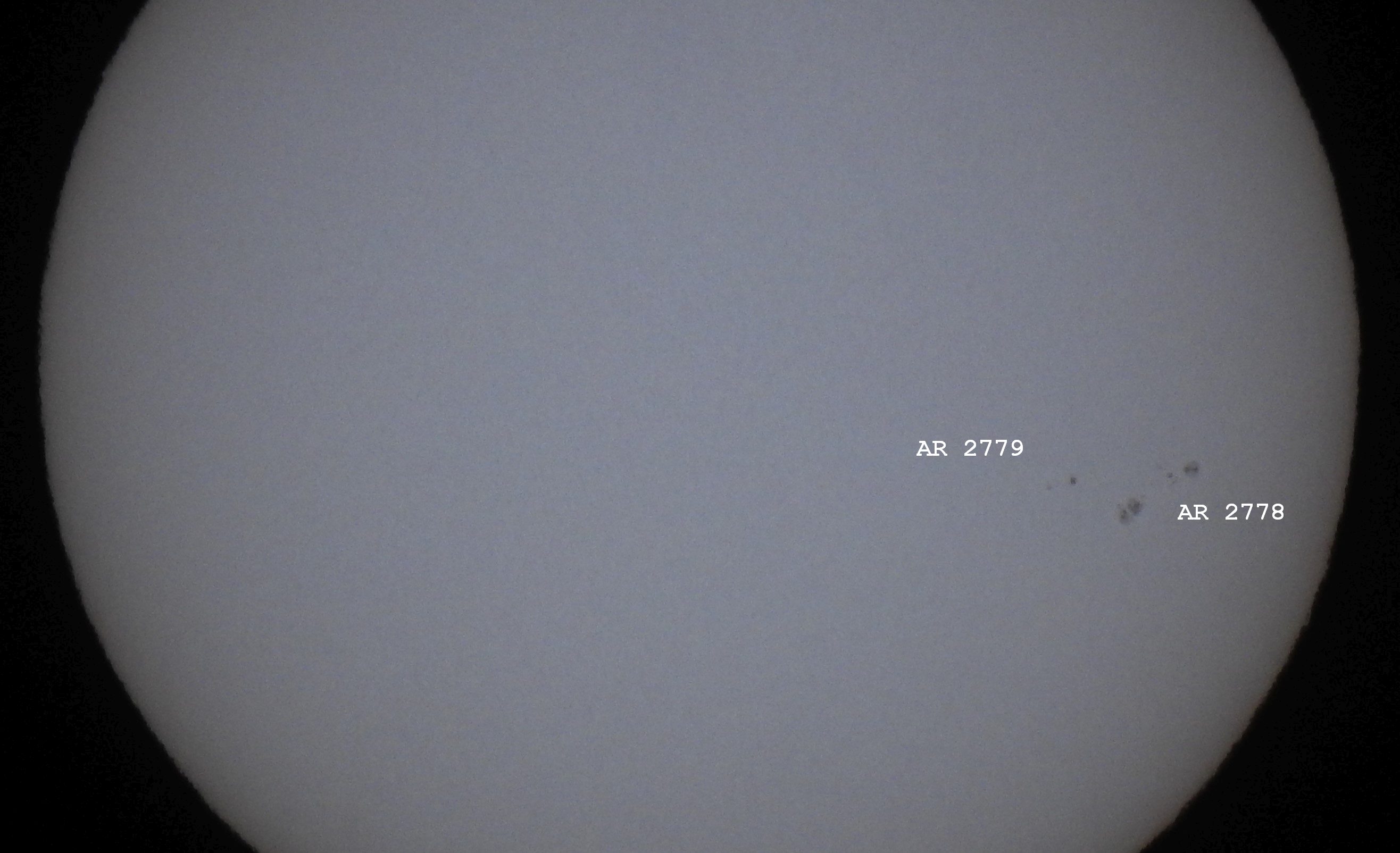
2020-October 28 - Rick Stankiewicz - The Sun has been active A new Solar Cycle has started and the past few days have shown some great Active Regions (AR) in sunspot activity. They are moving out of view now over the eastern limb, but it looks like it is the sign of things to come. The attached image was taken yesterday (Oct.28/20) and AR2778 is several spots strung out over about 100,000km. Each dark umbral region is the size of one or two Earth’s! AR2779 was just starting to develop, but each day is getting bigger and is also stretching itself out. We will see what we will see. I just used my Nikon P900 on a tripod and a Baader filter to get these images (cropped) ISO 200, f/8, 1/2500 sec. exp.

2021-Feb. 19 - Rodger Forsyth - Sun Pillar P1 Sun pillar taken Feb. 19, 2021 at 5:50 p.m. P1 wide angle Coolpix P900 camera 1/160s, f2.8 ISO 100

2021-Feb. 19 - Rodger Forsyth - Sun Pillar P2 Sun pillar taken Feb. 19, 2021 at 5:50 p.m. P2 telephoto Coolpix P900 at 4X zoom 1/60s, f4, ISO 125
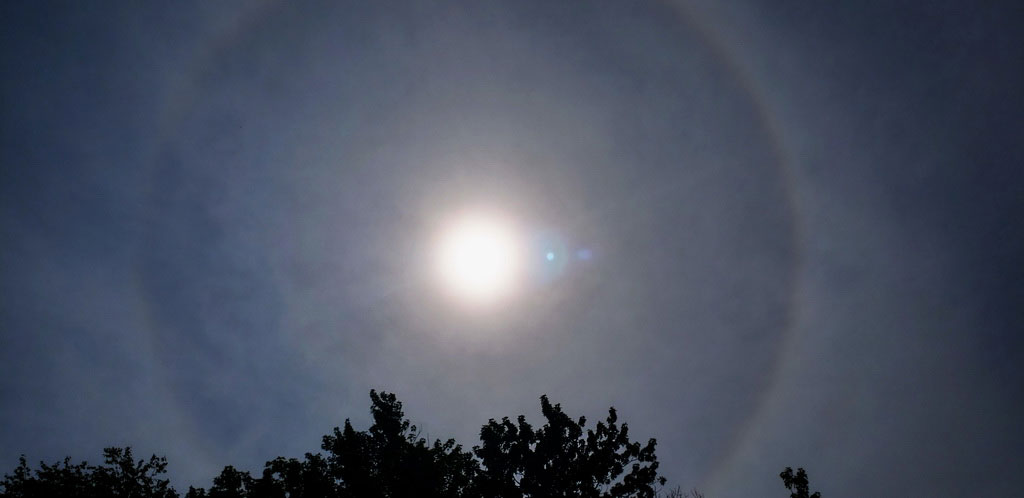
2021-July 24 - Rodger Forsyth - Solar Halo Atmospheric conditions were ripe this morning at 11 am for a Solar halo. There is a hint of rainbow colour. Taken by : Rodger Forsyth Date : 2021 - July 24
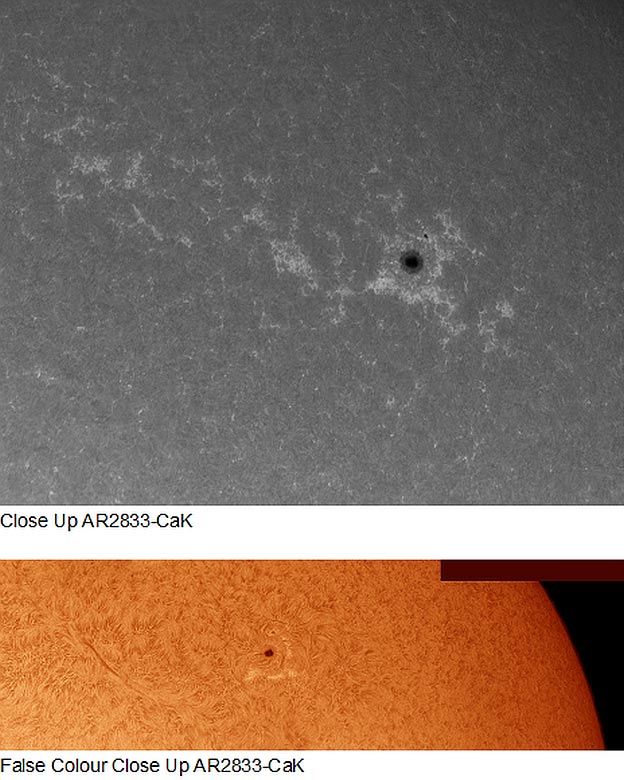
2021-Jun 20 - Brian Colville - Close Up AR2833-CaK and False Colour We had nice clear skies both Saturday and Sunday morning here, but I was late getting home from work on Saturday so the seeing wasn’t great by the late morning. I was able to start earlier on Sunday and got some better conditions, which produced better images. I have attached a few of the images from Sunday…the full disk Ha is through the double stacked LS80T and the full disk CaK is through the Orion 130 at prime focus. The close-ups are all with the 130mm scope…the CaK used a 3x barlow and the Ha used a 4x Powermate with the Quantum filter. I added a colour to the Ha close-up image. All the originals are captured in monochrome.
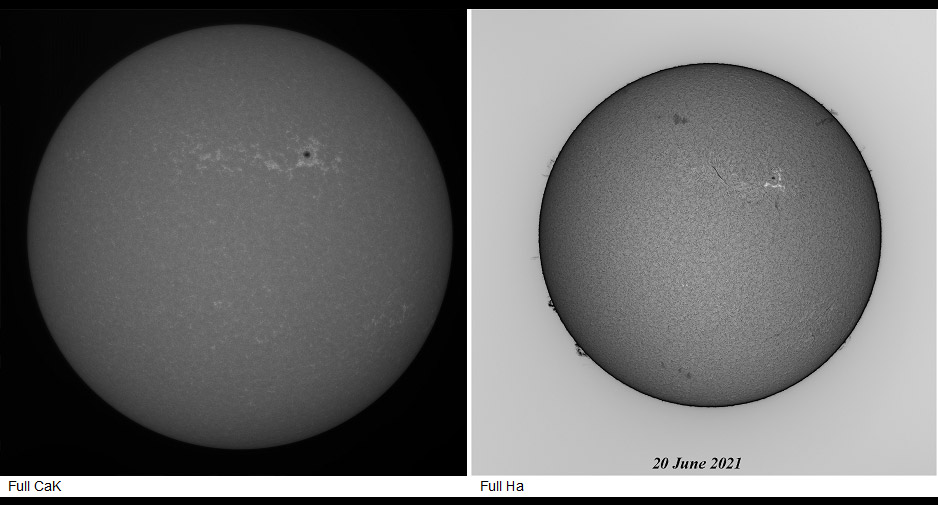
2021-Jun 20 - Brian Colville - Full-CaK and Full-Ha We had nice clear skies both Saturday and Sunday morning here, but I was late getting home from work on Saturday so the seeing wasn’t great by the late morning. I was able to start earlier on Sunday and got some better conditions, which produced better images. I have attached a few of the images from Sunday…the full disk Ha is through the double stacked LS80T and the full disk CaK is through the Orion 130 at prime focus. The close-ups are all with the 130mm scope…the CaK used a 3x barlow and the Ha used a 4x Powermate with the Quantum filter. I added a colour to the Ha close-up image. All the originals are captured in monochrome.
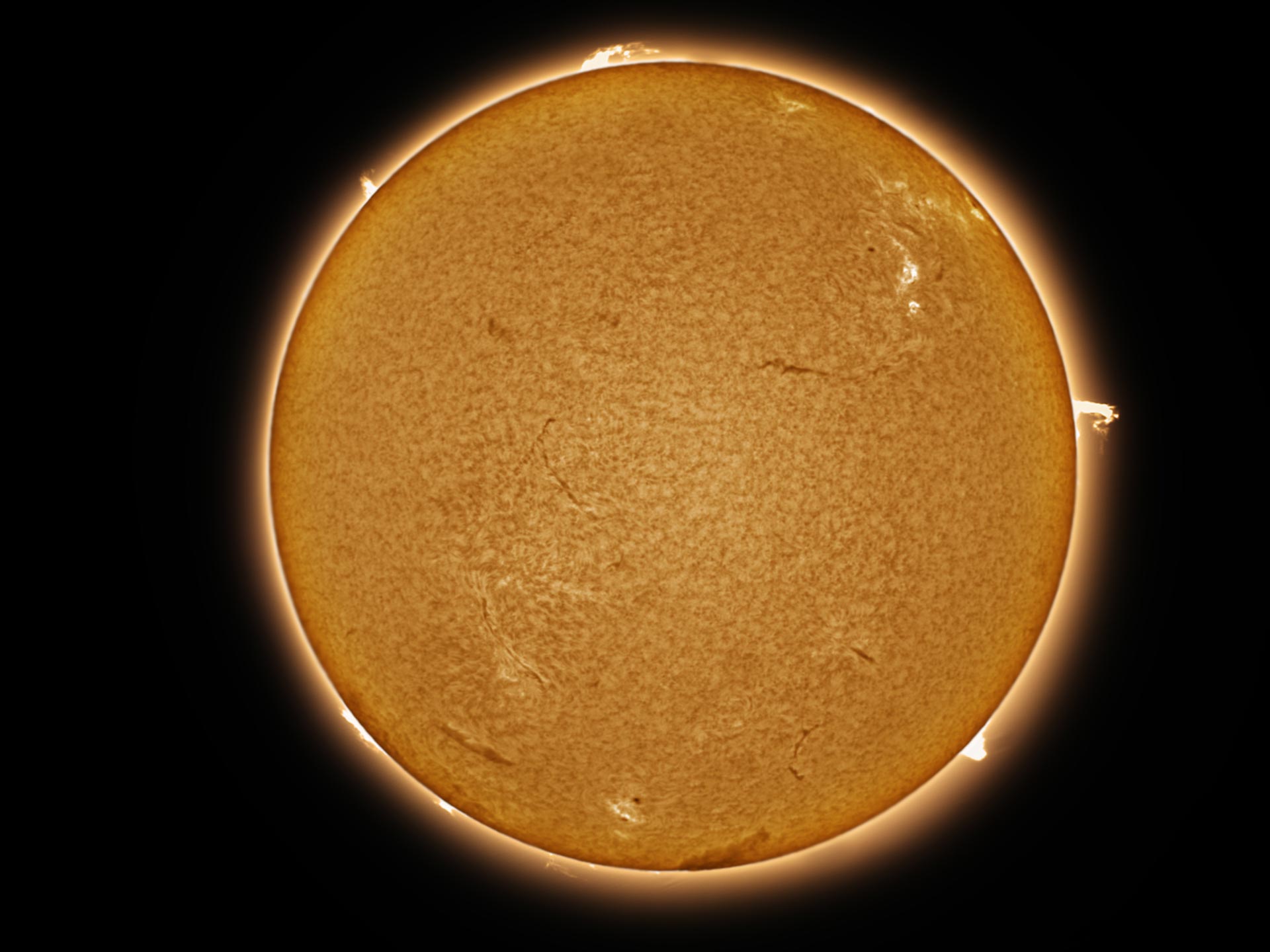
Taken June15, 2013 with a solar max scope, aug41 ccd imager with IC Cap and processed with AVstack 2 and CS5. Nutwood Observatory Brian McGaffney
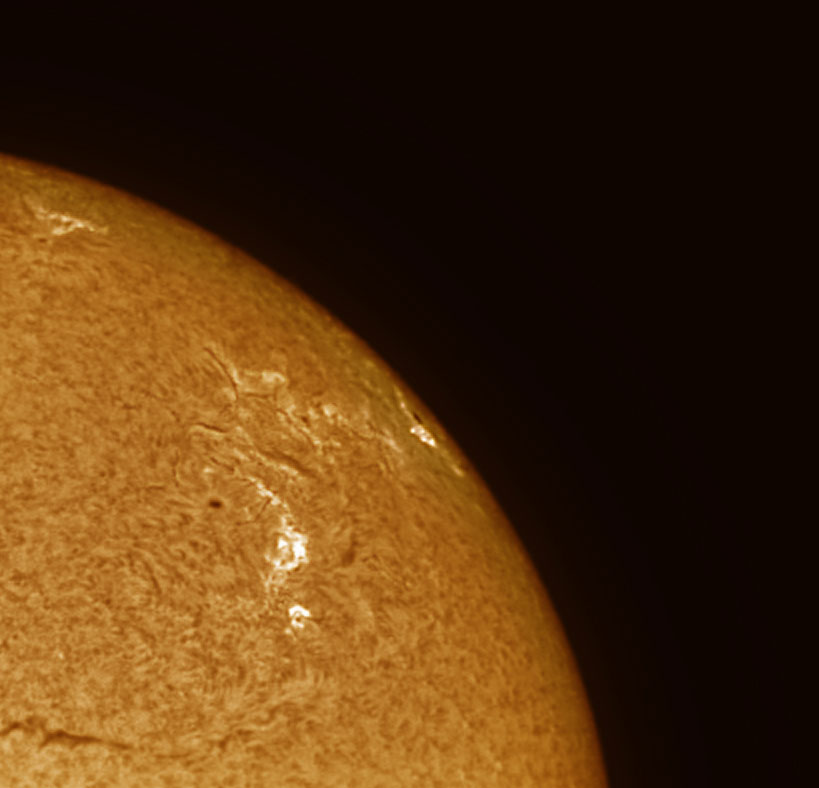
Taken June15, 2013 with a solar max scope, aug41 ccd imager with IC Cap and processed with AVstack 2 and CS5. Nutwood Observatory Brian McGaffney
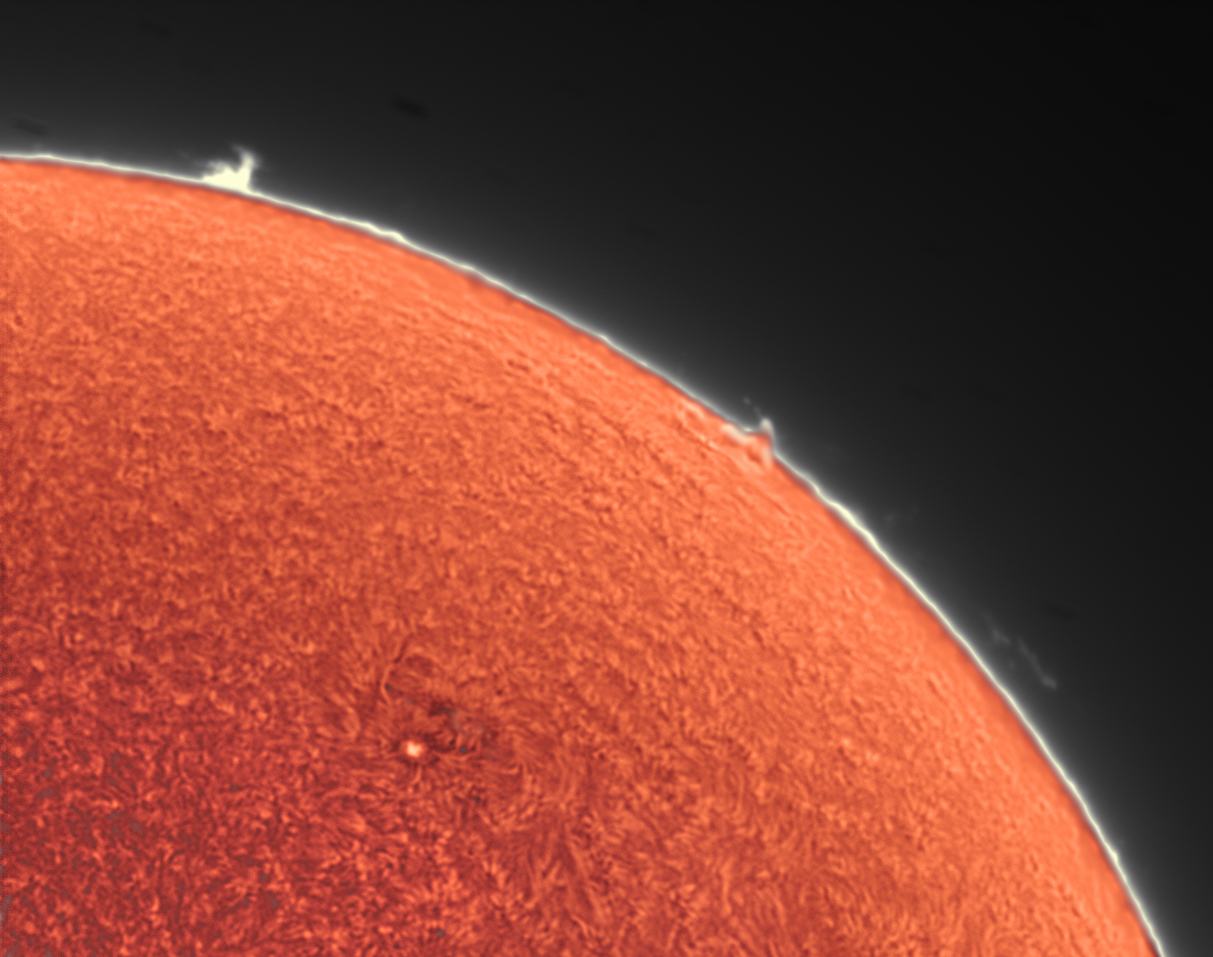
Taken with solarscope 100 and imaged over 4 hrs of processing. Brian McGaffney
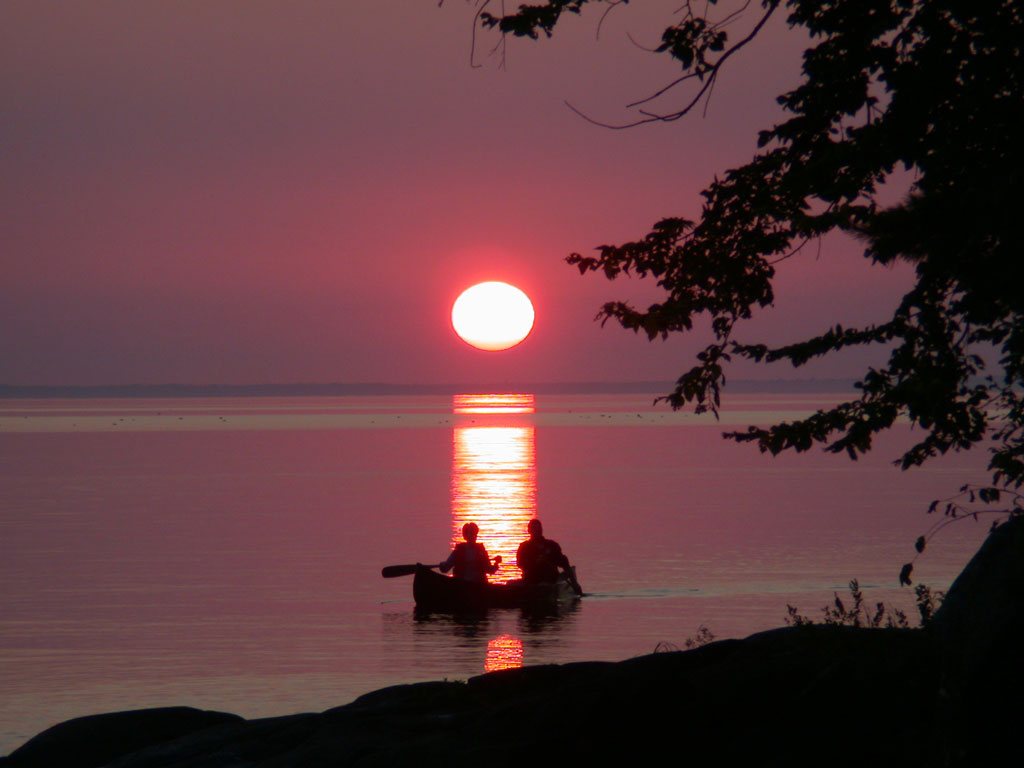
Lake Nipissing Sunset Glitter Rick Stankiewicz
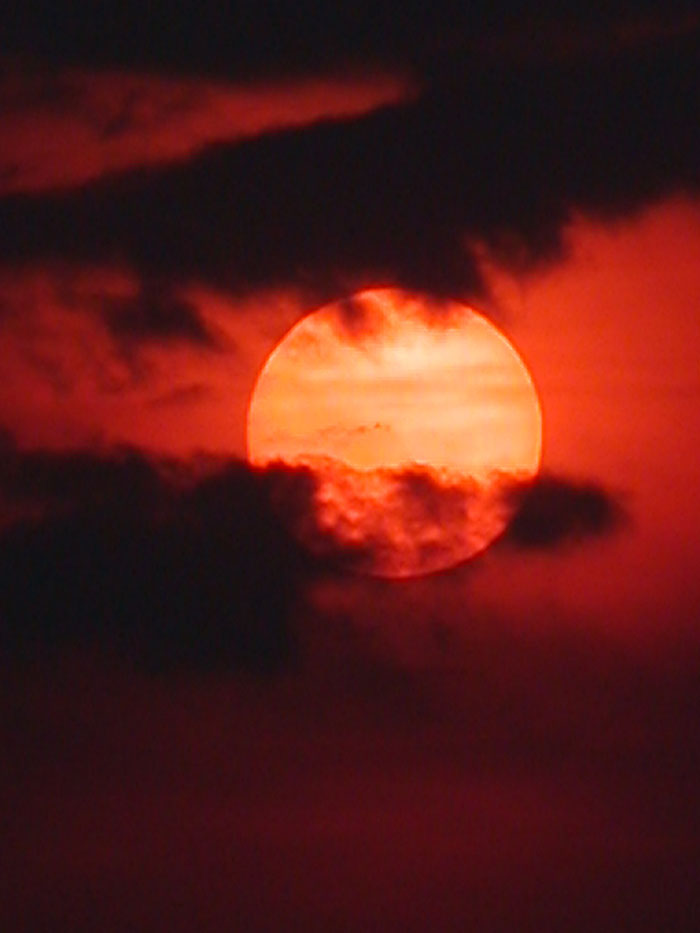
Setting Sun Spots Rick Stankiewicz Aug.18.04
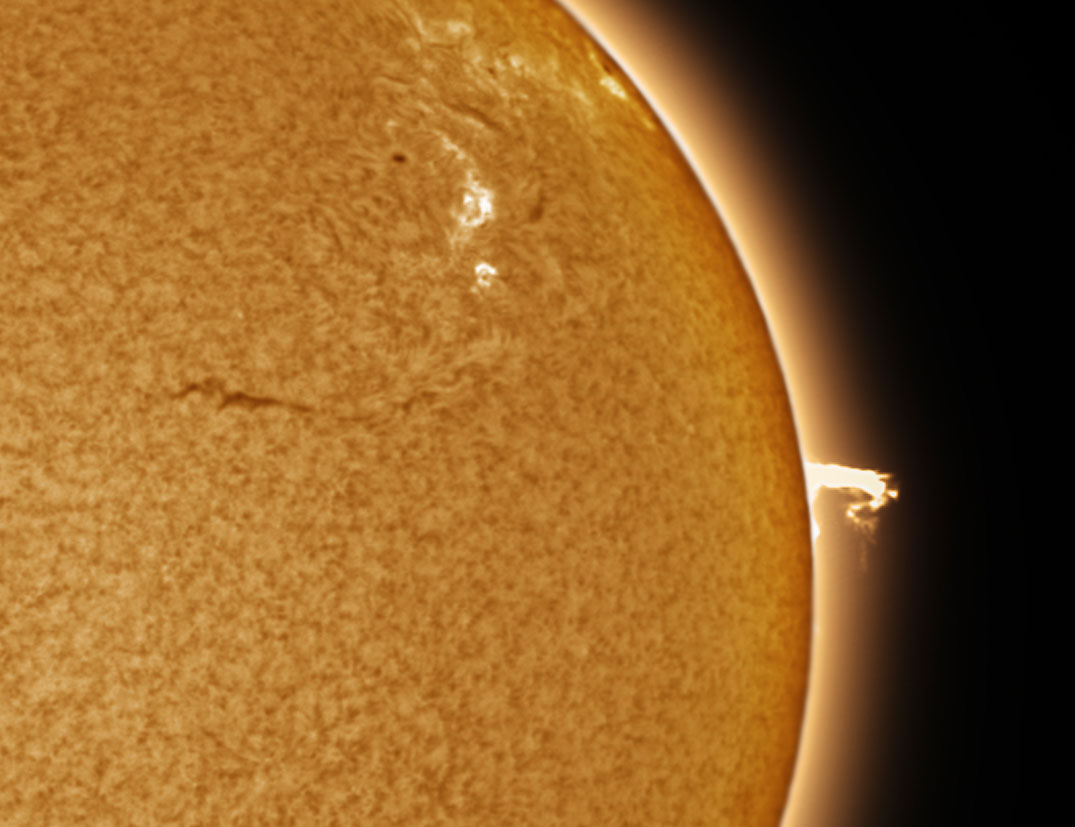
Solar flare near AO 154. Taken June 15, 2013. Nutwood Observatory Brian McGaffney
Solar Observing Session May 19, 2017 - Picture 1 Sony a6000 with a 2x tele-extender at the prime focus of Brian Colville's double stacked Lunt 80mm solar scope. Exposure was 1/25s @ ISO1600 PAA members set up for a solar observing session at Brian Colville's Observing site. Photos by Sean Dunne
Solar Observing Session May 19, 2017 - Picture 2 Sony a6000 with a 2x tele-extender at the prime focus of Brian Colville's double stacked Lunt 80mm solar scope. Exposure was 1/25s @ ISO1600 The sun approximately as it appeared to the naked eye looking through the same telescope setup. Photos by Sean Dunne
Solar Observing Session May 19, 2017 - Picture 3 Sony a6000 with a 2x tele-extender at the prime focus of Brian Colville's double stacked Lunt 80mm solar scope. Exposure was 1/25s @ ISO1600 The red channel is reduced and the green channel enhanced to show the chromosphere and prominences more clearly. Photos by Sean Dunne
Solar Observing Session May 19, 2017 - Picture 4 Sony a6000 with a 2x tele-extender at the prime focus of Brian Colville's double stacked Lunt 80mm solar scope. Exposure was 1/25s @ ISO1600 Similar to Solar Observing May 19, 2017 - Picture 3, except cropped to expand the detail in the chromasphere and in the prominences. Photos by Sean Dunne
Solar Observing Session May 19, 2017 - Picture 5 Sony a6000 with a 2x tele-extender at the prime focus of Brian Colville's double stacked Lunt 80mm solar scope. Exposure was 1/25s @ ISO1600 Is similar toSolar Observing Session May 19, 2017 - Picture 2 except with red channel enhanced to show fainter detail in the prominences Photos by Sean Dunne
Solar Observing Session May 19, 2017 - Picture 6 Sony a6000 with a 2x tele-extender at the prime focus of Brian Colville's double stacked Lunt 80mm solar scope. Exposure was 1/25s @ ISO1600 The red and green colour channels were adjusted to give greater contrast in the filaments and granulation in the surface detail and the result converted to monochrome. Photos by Sean Dunne
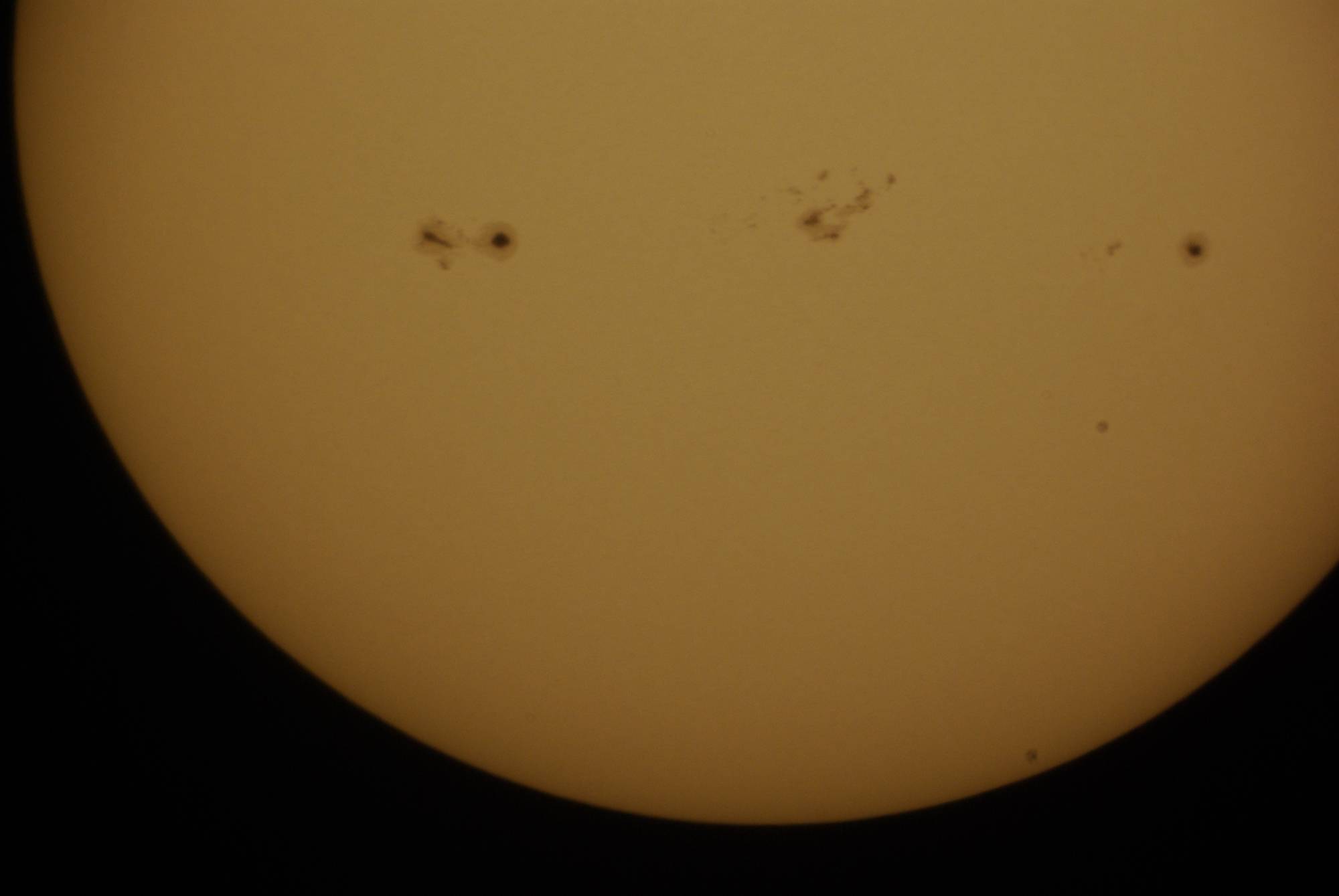
Sun Rick Stankiewicz August 1, 2011 Rodger Forsyth
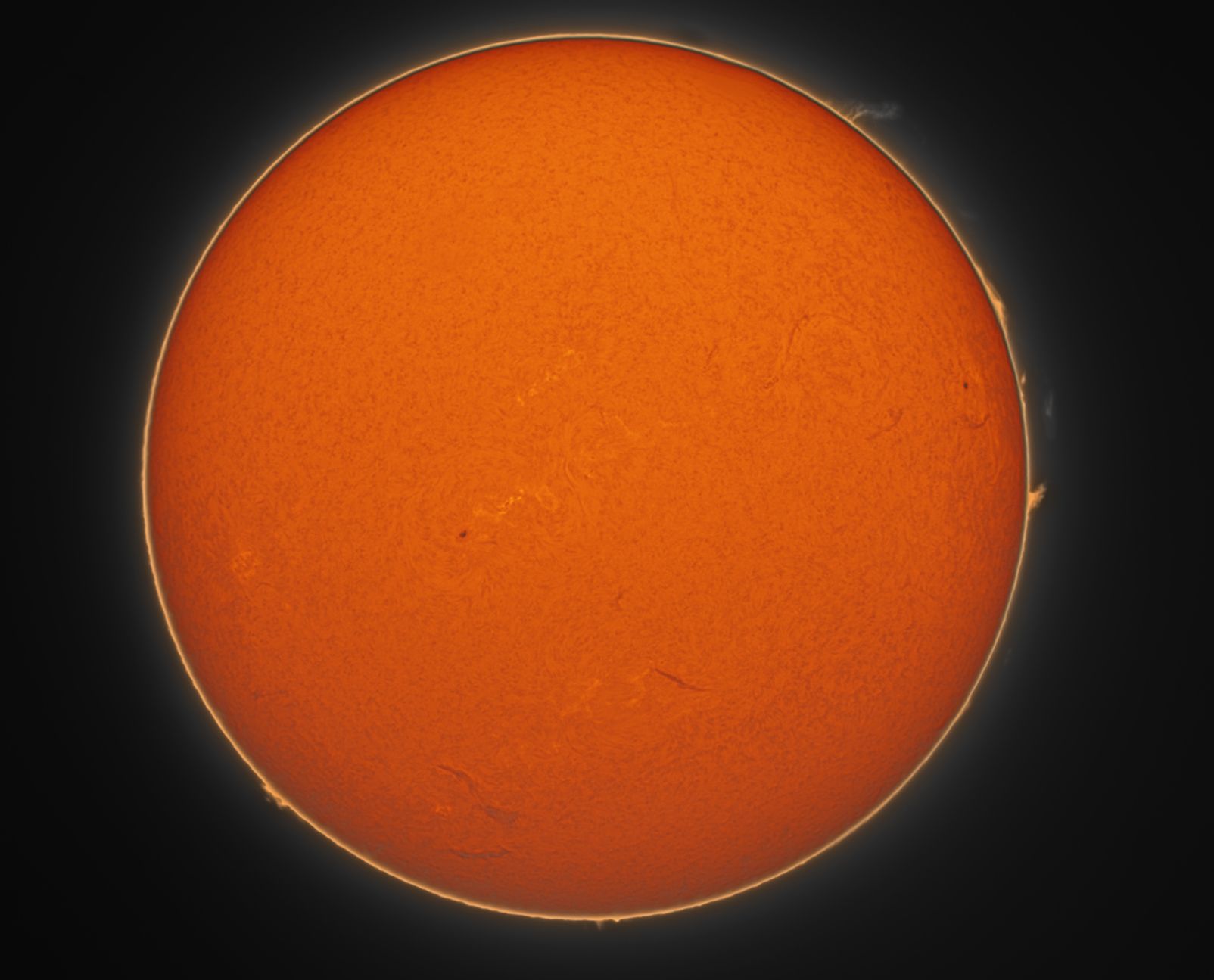
Taken with a "100 ha solar scope "using a Aug41 ccd. camera, an EQ6Pro mount and an electro pier tech mount. Acquisiont time about 30 minutes all toll. Post processing in Avistack 2.2 and CS5. Post processing about 5 hrs in all. Notice the beaituful flares at around 1pm. Brian McGaffney
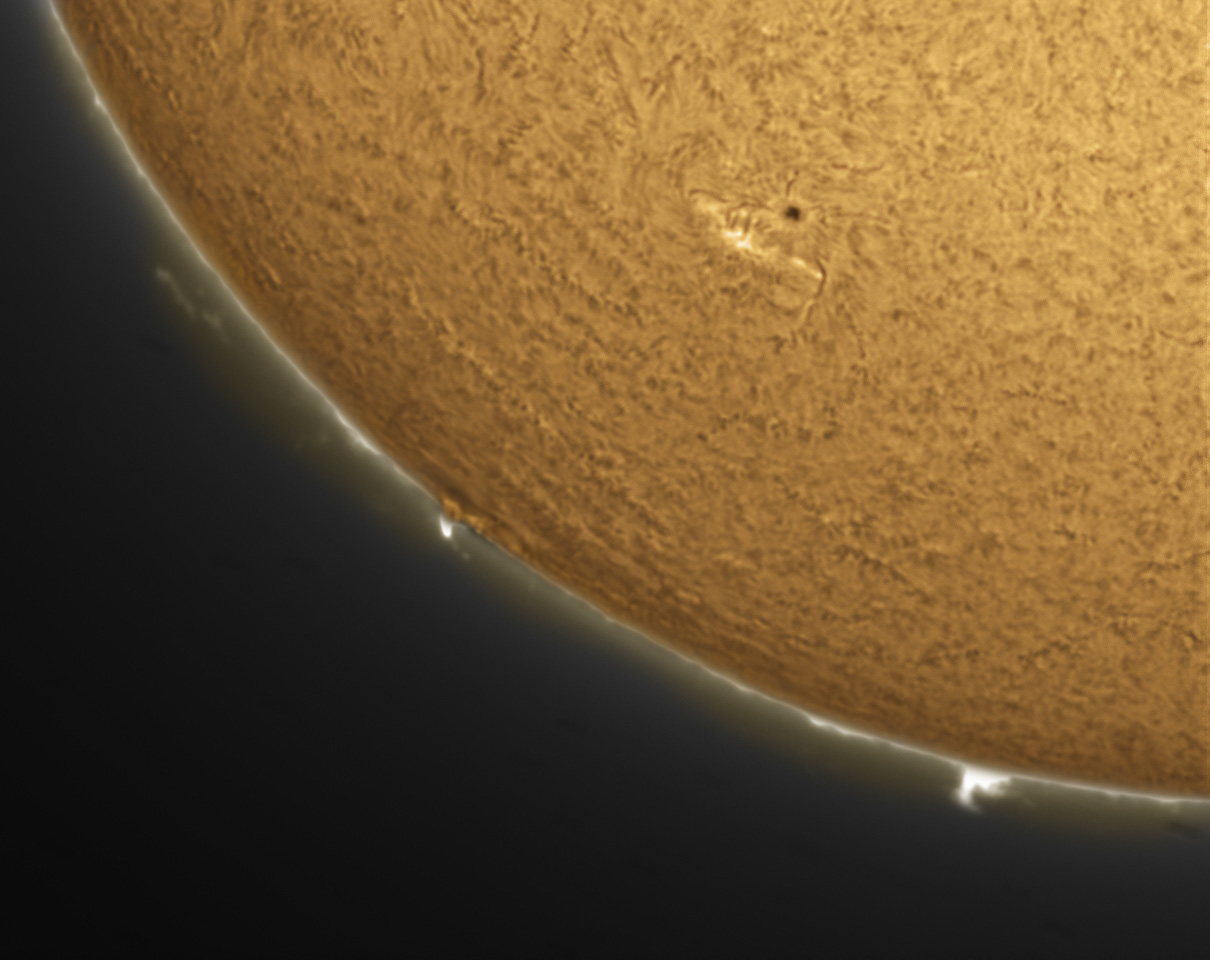
Image was taken on July 30, 2013 with a solar scope 100 with a triplett ha lens. This allows extreme close up detail where needed. Post processing was about 4 hrs using CX2-ep and PS5cs. Brian McGaffney Nutwood Observatory
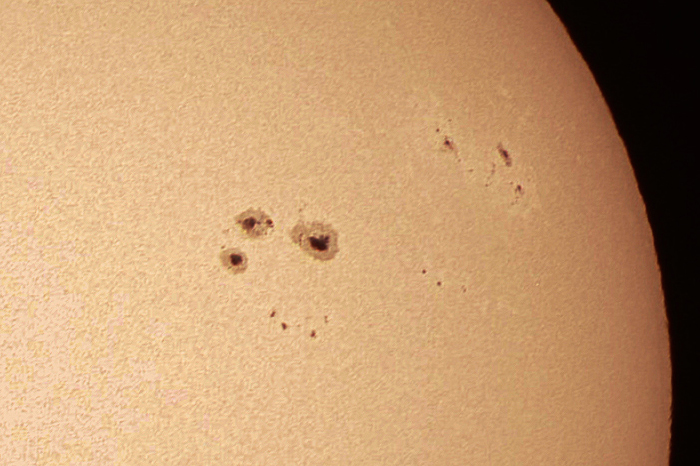
This solar image was taken from the Nutwood Observatory using a modified tech 140 and also modified canon DLSR. The regular granular solar events show up nicely all over the sun, but to-day was an event for all astronomers to see the large black spot facing us. This taken on June 16th 2012. Brian McGaffney - Nutwood Observatory
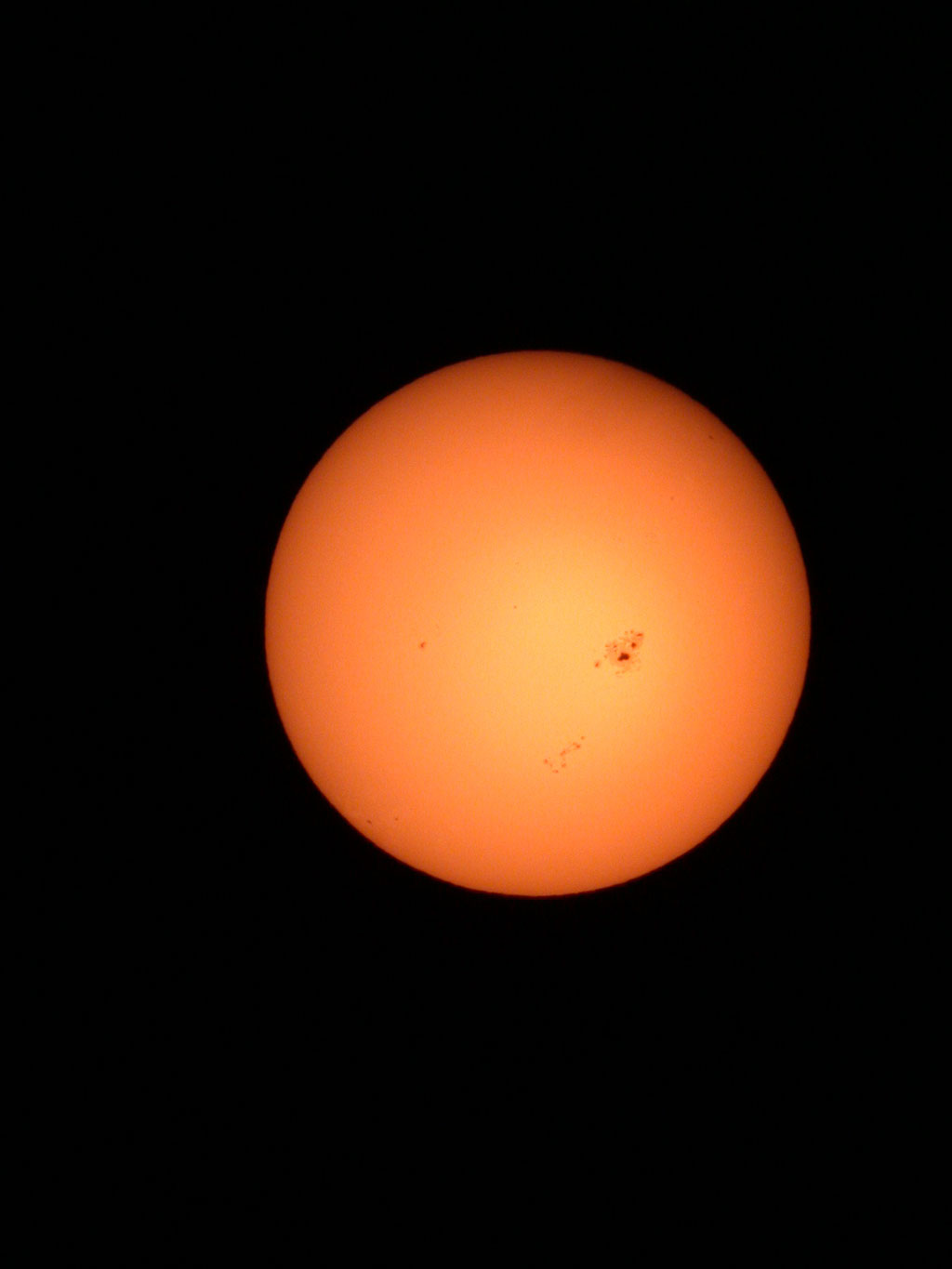
Sunspot_1 Rick Stankiewicz 69-Aug.02
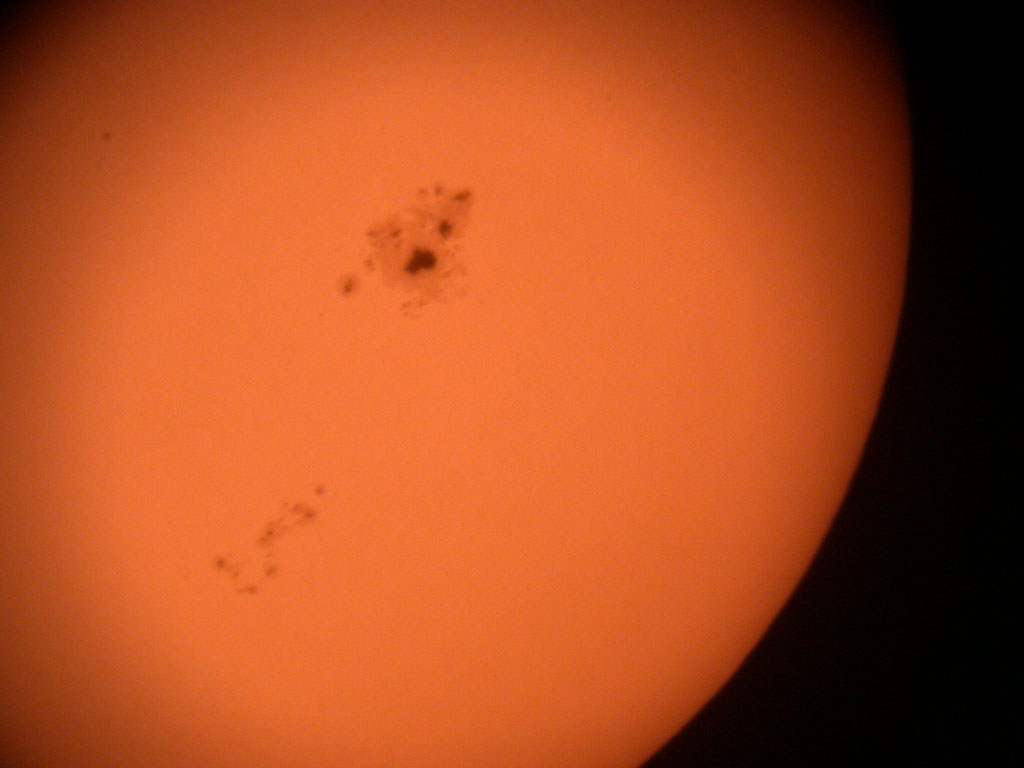
Sunspot_2 Rick Stankiewicz 69-Aug.02
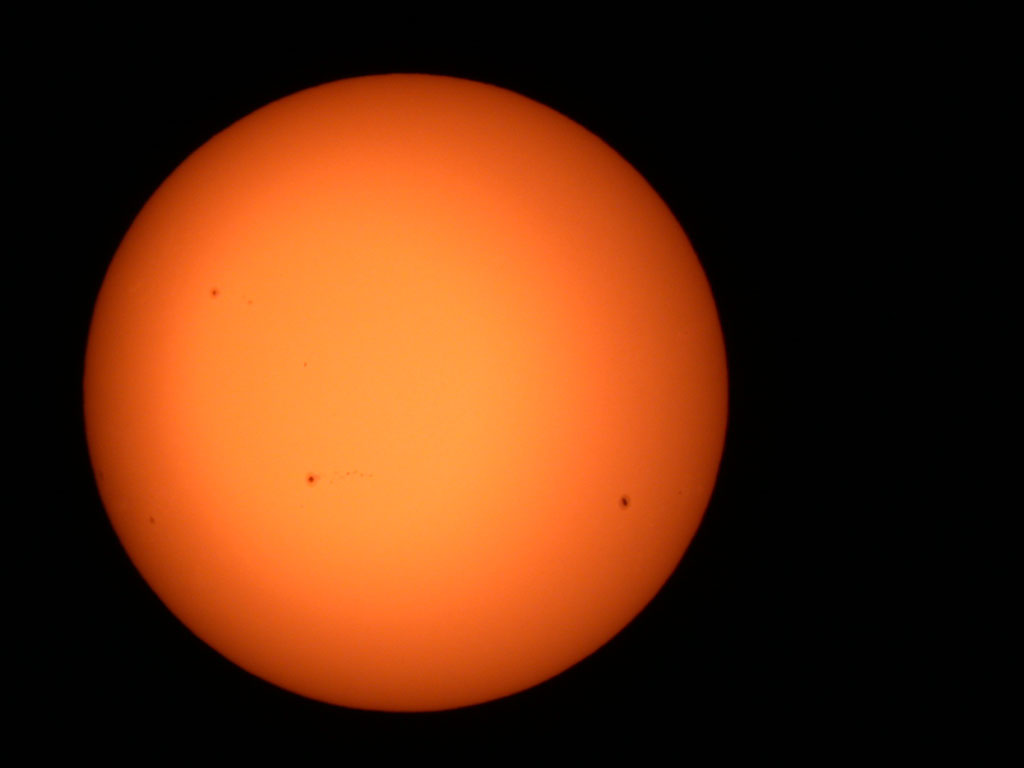
Sunspots Rick Stankiewicz Jun.02
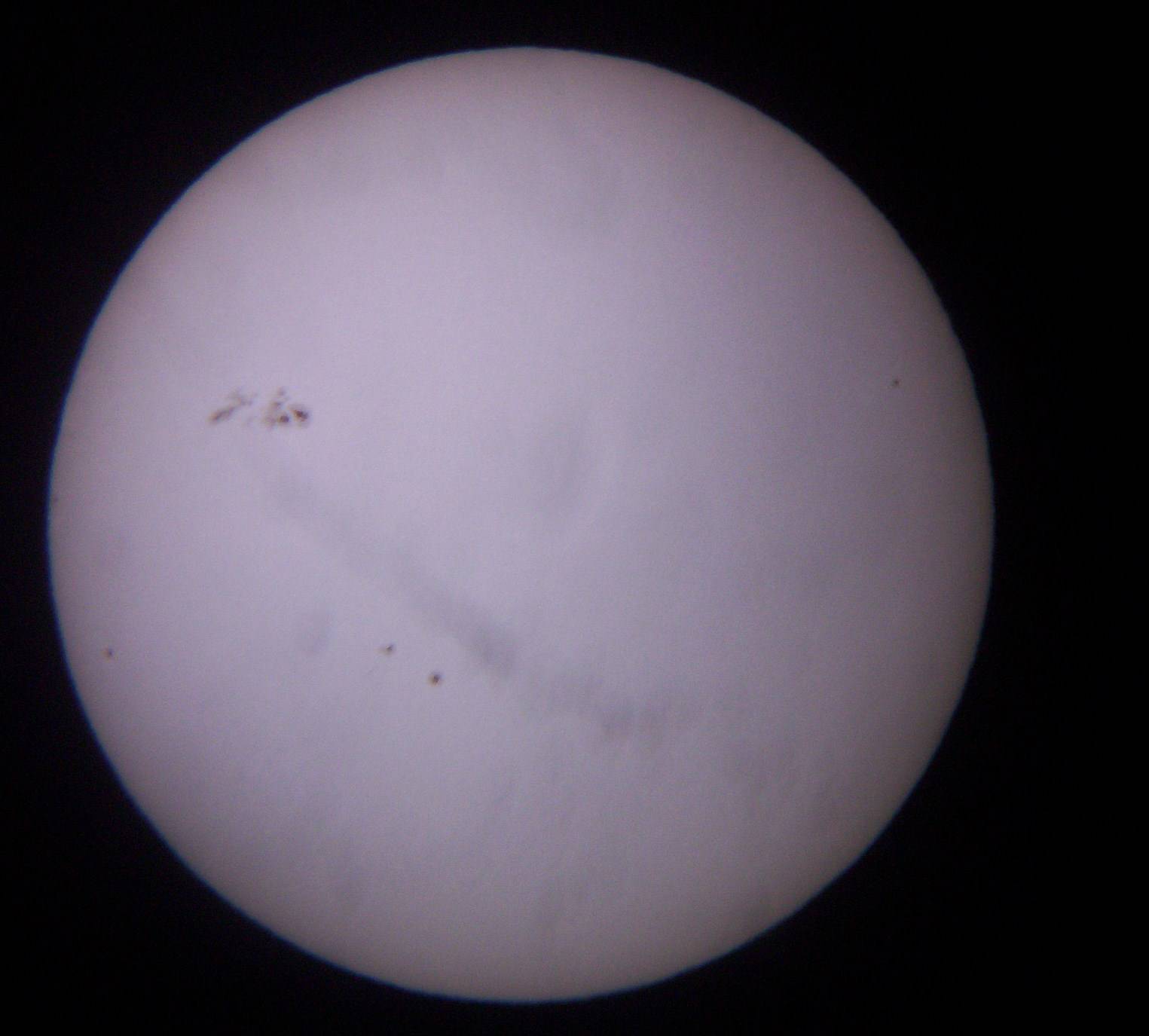
Sun Cheap Kodak at the eyepiece Stargazer Steve 4-1/4" planetary Dob / Burgess Optics SWA (70 degree) 20mm eyepiece November 5, 2011 Mark Coady Baader Solar Filter
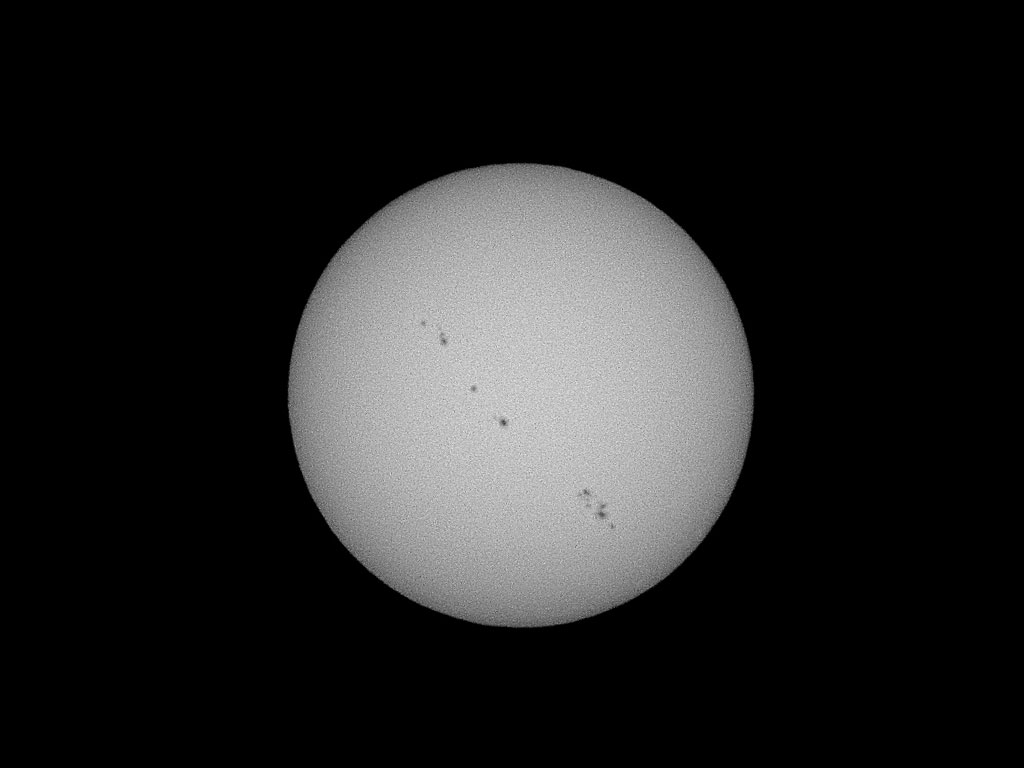
Do I get extra marks for arranging my sunspots on a diagonal? Canon SX30IS @ 35x Optical Zoom. 1/40 @ f8, ISO100. Skynews Filter. Sean Dunne
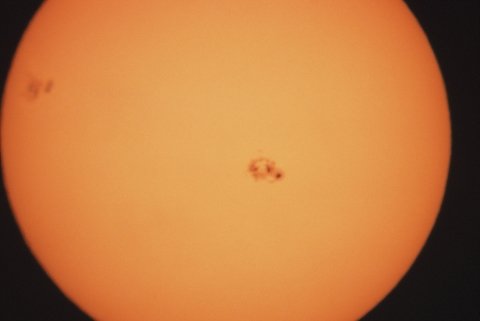
Sunspots Rick Stankiewicz